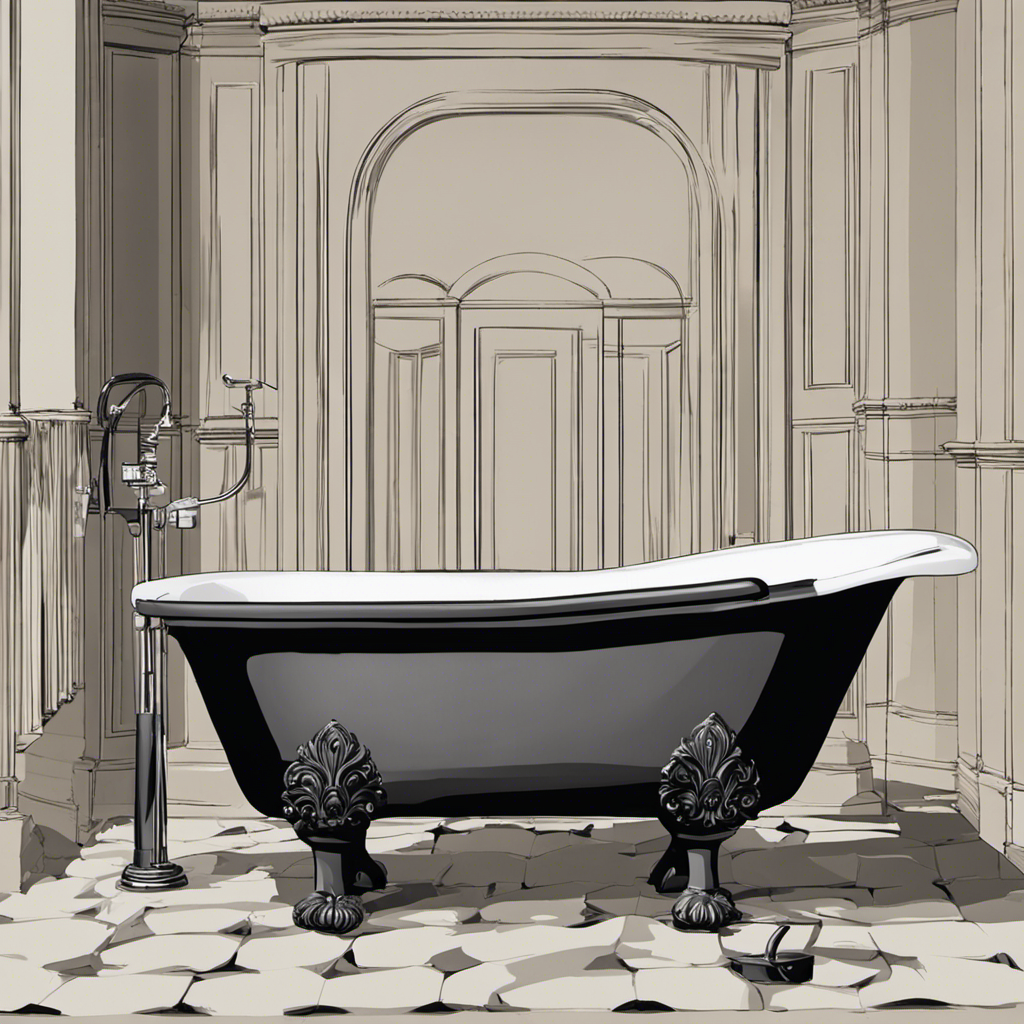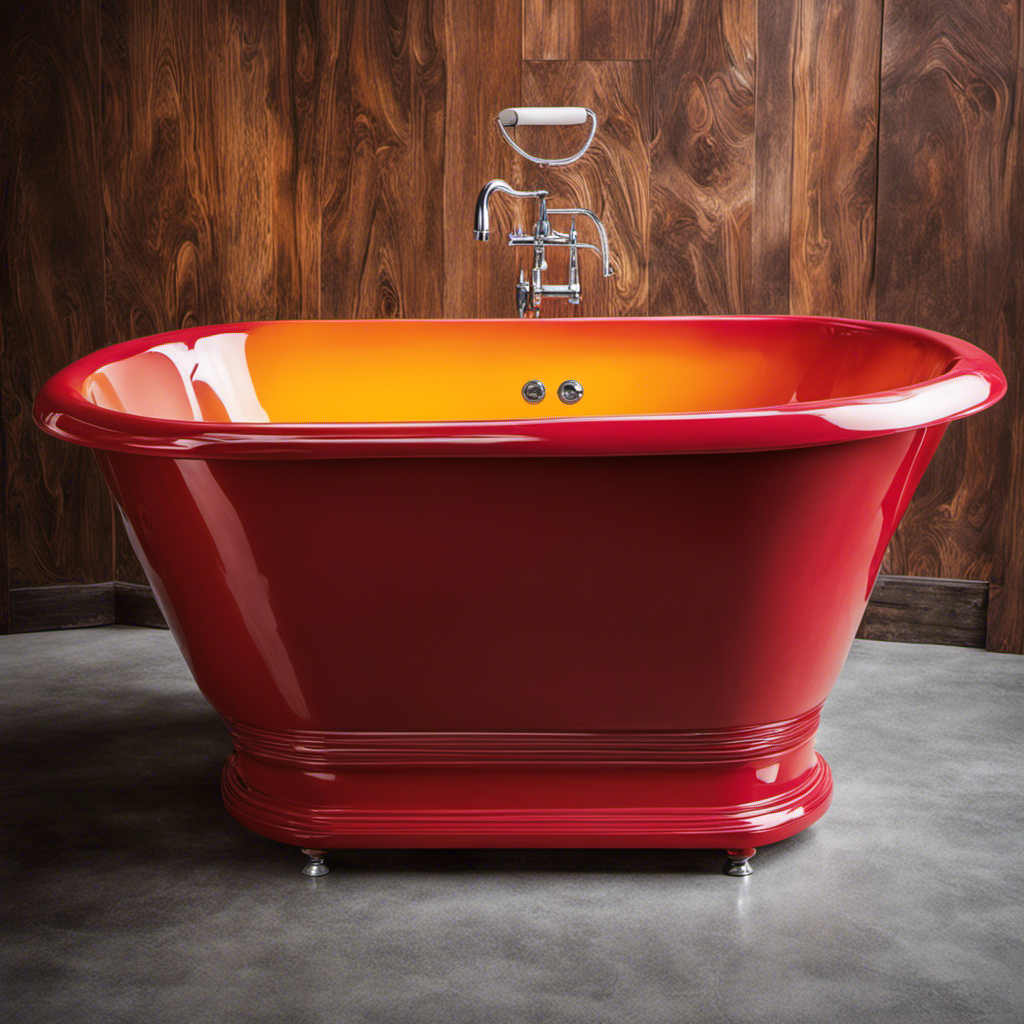Do you find the continuous, irritating noise of a toilet running to be exhausting? We’ve all experienced it. But don’t worry, as we’re here to assist you in resolving this annoying issue for good.
In this step-by-step guide, we’ll show you how to put an end to the never-ending water flow. From checking the flapper valve to troubleshooting other possible causes, we’ll guide you through the process with ease.
Get ready to become a master of toilet repair!
Key Takeaways
- The flapper valve may need to be checked and adjusted to prevent continuous water flow.
- The float should be adjusted to ensure proper water level in the tank and avoid constant running and potential leaks.
- The fill valve may need to be cleaned or replaced to address issues with water flow.
- The chain connecting the flush handle to the flapper valve should be inspected and adjusted for proper operation.
Checking the Flapper Valve
First, we’ll inspect the flapper valve to determine if it’s causing the toilet to keep running. The flapper valve is a crucial component of the toilet tank that controls the flow of water from the tank into the bowl. To check the flapper valve, start by removing the tank lid and flushing the toilet. Observe the flapper valve as it opens and closes during the flushing process.

If the flapper valve doesn’t close properly or is worn out, it can cause water to continuously flow into the bowl, leading to a running toilet. To fix this issue, you can try adjusting the chain connected to the flush handle or replacing the flapper valve altogether.
Additionally, it’s essential to check the water pressure in your home, as high water pressure can also contribute to a running toilet.
Adjusting the Float
To continue troubleshooting a running toilet, let’s now address the issue of adjusting the float.
The float is responsible for regulating the water level in the toilet tank. If it’s set too high, it can cause the toilet to constantly run, wasting water and potentially causing leaks.

To adjust the float, locate the fill valve in the toilet tank. The fill valve is usually located on the left side of the tank. Adjust the float by turning the screw or sliding the adjustment clip on the float arm. Lowering the float will reduce the water level in the tank, while raising it will increase the water level. It’s important to find the right balance that allows the toilet to fill properly without overflowing.
Understanding water pressure is also crucial in troubleshooting leaks. Once you have adjusted the float, you can move on to cleaning or replacing the fill valve to further resolve the issue.
Cleaning or Replacing the Fill Valve
Now let’s move on to cleaning or replacing the fill valve, as it’s another important step in troubleshooting a running toilet.
To begin, start by turning off the water supply to the toilet.

Next, flush the toilet to drain the tank completely.
Once the tank is empty, locate the fill valve, which is usually located on the left side of the tank.
If you’re replacing the fill valve, disconnect the water supply line from the valve using an adjustable wrench. Then, remove the old fill valve by unscrewing it counterclockwise.
If you’re cleaning the fill valve, use a brush or cloth to remove any debris or mineral buildup.

Finally, install the new fill valve by screwing it in clockwise and reconnect the water supply line.
Don’t forget to turn the water supply back on and test the toilet for any leaks.
If you’re also replacing the flush handle, remove the old handle by unscrewing it and install the new handle by screwing it in place.
Inspecting and Fixing the Chain
To properly address the issue of a running toilet, we need to inspect and fix the chain. The chain is responsible for connecting the flush handle to the flapper, allowing it to open and close properly. Here are the steps to inspect and fix the chain:

- Start by removing the toilet tank lid and locating the chain connected to the flush handle.
- Check if the chain is tangled or caught on any parts. If so, untangle or release it to allow smooth movement.
- Next, check the length of the chain. It should have just enough slack to allow the flapper to fully close after flushing.
- If the chain is too short or too long, adjust its length by either tightening or loosening the chain links.
By inspecting and fixing the chain, you can ensure that the flush handle operates smoothly, allowing the flapper to seal properly and ultimately resolving the issue of a running toilet.
Troubleshooting Other Possible Causes
Let’s now explore other possible causes for a running toilet and how to troubleshoot them.
One potential issue could be water pressure problems. If the water pressure in your toilet is too high, it can cause the toilet to continuously run. To fix this, you can adjust the water pressure regulator valve or install a pressure-reducing valve.
Another possible cause is a faulty flush handle. If the handle is loose or broken, it may not properly engage with the flapper, causing the toilet to run. To fix this, you can tighten or replace the handle. Additionally, make sure the chain connecting the handle to the flapper is properly adjusted and not too tight or too loose.

Frequently Asked Questions
How Often Should I Replace the Flapper Valve in My Toilet?
To determine how often to replace the flapper valve in a toilet, observe signs indicating a replacement is needed, such as continuous running water. Troubleshoot a running toilet by following these steps.
Can I Adjust the Float to Make My Toilet Flush More Forcefully?
To troubleshoot flush power, adjusting the float level might help. First, locate the float adjustment screw and turn it clockwise to lower the float. Test the flush to see if it improves. Repeat if necessary.
How Can I Tell if My Fill Valve Needs to Be Cleaned or Replaced?
To determine if a fill valve needs cleaning or replacing, inspect for mineral build-up or leaks. Shut off the water supply, flush the toilet, and remove the fill valve. Clean or replace it accordingly.
What Should I Do if the Chain in My Toilet Is Too Loose?
If the chain in our toilet is too loose, we need to tighten it. This is like adjusting the tension in a guitar string. If that doesn’t work, we may need to replace the flapper.

Are There Any Other Common Causes of a Running Toilet That I Should Be Aware Of?
Toilet tanks that keep running can have several common causes. These include issues with the flapper valve, the fill valve, or even the water pressure. Understanding these causes is key to fixing the problem.
Conclusion
In conclusion, fixing a running toilet can be a simple task if you follow the step-by-step instructions provided.
By checking the flapper valve, adjusting the float, cleaning or replacing the fill valve, and inspecting the chain, you can easily troubleshoot and fix the issue.
Remember to use the technique of coincidence while performing these steps to make the process more interesting and engaging.

With a little effort and the right knowledge, you can successfully fix a toilet that keeps running.










